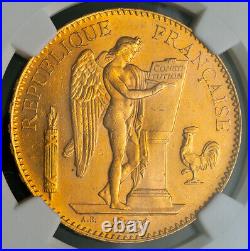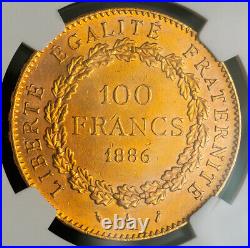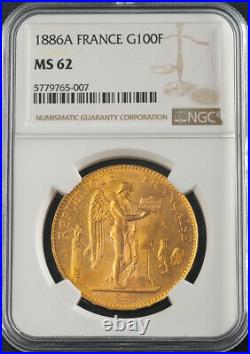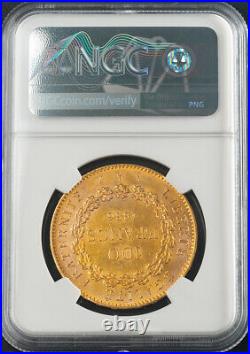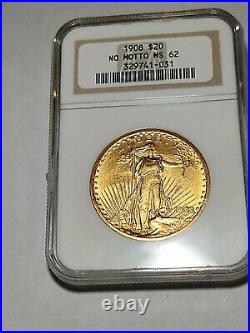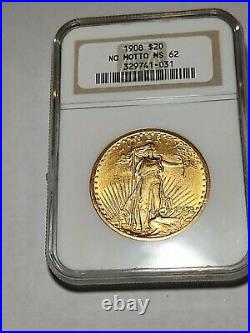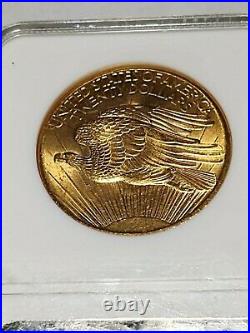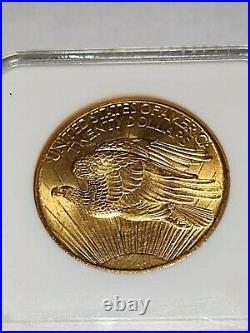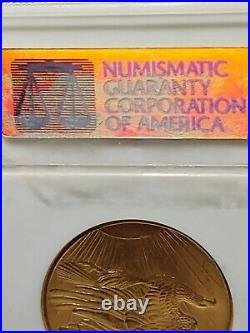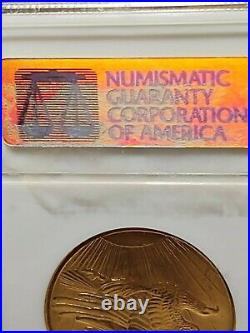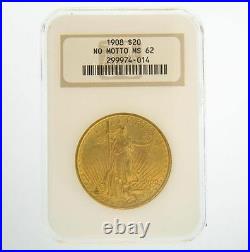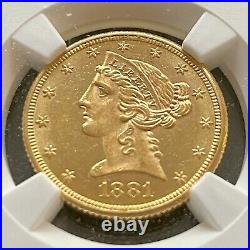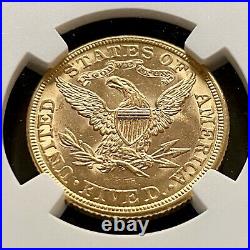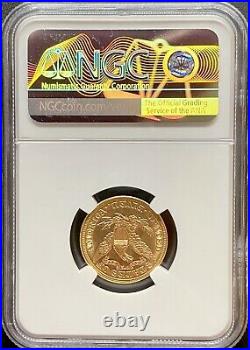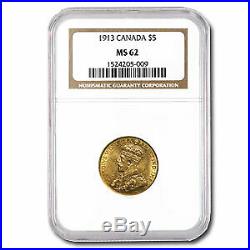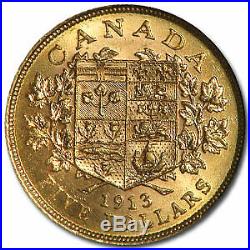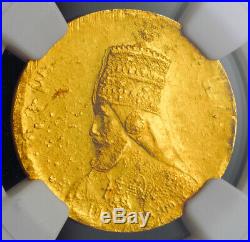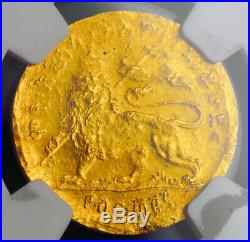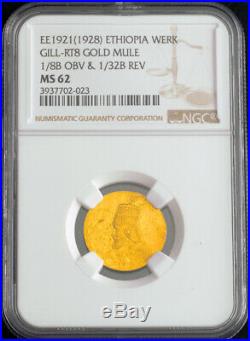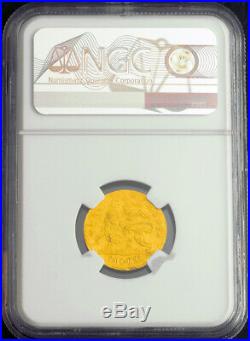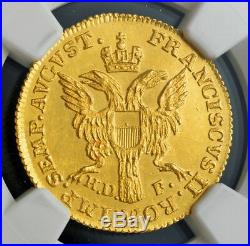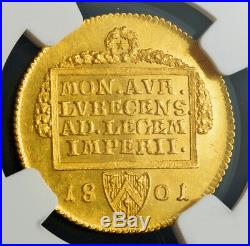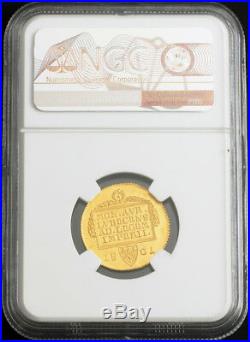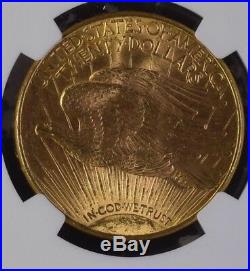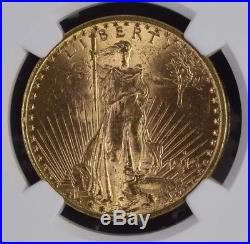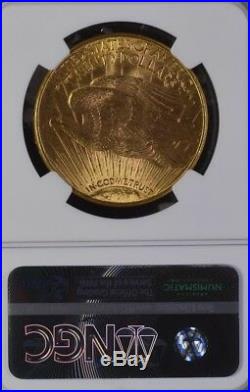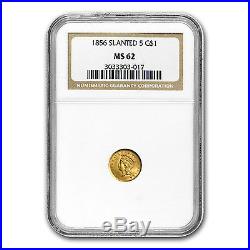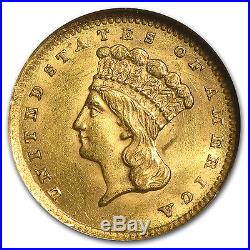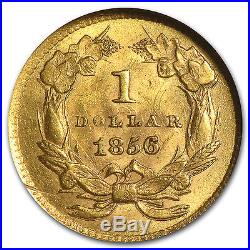
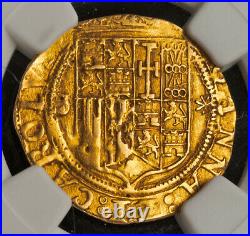
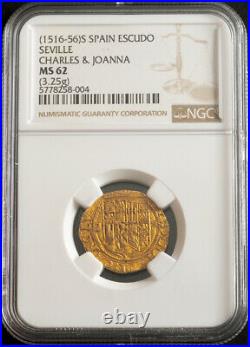
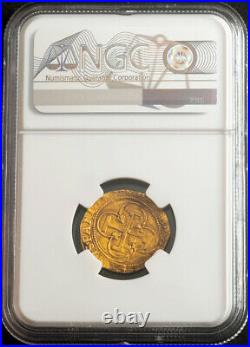

1555, Charles & Joanna of Spain. Scarce Gold Escudo Coin. Reference: Friedberg 153, Cayon 3146, KM. Very rare in mint state! Ruler: Charles I (as King of Spain – Charles V as Holy Roman Emperor) together with Joanna of Spain. Diameter: 24mm Weight: 3.25gm Material: Gold! Obverse: Cross of Jerusalem within quatrefoil with invereted leaf terminals. Legend: HISPANIARVM ° REGES ° SICILI (privy mark: castle) Reverse: Crowned Spanish arms, flanked by privy mark to right and mint letter (S) to left. Legend: IOANNA ° ET ° CAROLVS. Charles V (24 February 1500 21 September 1558) was ruler of the Holy Roman Empire from 1519 and, as Charles I of Spain , of the Spanish realms from 1516 until his abdication in 1556. On the eve of his death in 1558, his realm, which has been described as one in which the sun never sets, spanned almost 4 million square kilometers. As the heir of four of Europe’s leading dynasties the Habsburgs of Austria, the Valois of Burgundy, the Trastamara of Castile and the House of Aragon he ruled over extensive domains in Central, Western and Southern Europe, as well as the various Castilian (Spanish) colonies in the Americas. He was the son of Philip I of Castile (Philip the Handsome) and Juana of Castile (Joanna the Mad of Castile). His paternal grandparents were the Holy Roman Emperor Maximilian I and Mary of Burgundy, whose daughter Margaret raised him. His maternal grandparents were Ferdinand II of Aragon and Isabella I of Castile, whose marriage had first united their territories into what is now modern Spain, and whose daughter Catherine of Aragon was Queen of England and first wife of Henry VIII. His cousin was Mary I of England, who married his son Philip. As the first King to reign in his own right over both Castile and Aragon he is often considered as the first King of Spain. Charles provided five ships to Ferdinand Magellan after the Portuguese captain was repeatedly turned down by Manuel I of Portugal. The commercial success of the voyage, which temporarily enriched Charles by the sale of its cargo of cloves, laid the foundation for the oceanic empire of Spain. Charles’ reign constitutes the pinnacle of Habsburg power, when all the family’s far flung holdings were united in one hand. After his reign, the realms were split between his descendants, who received the Spanish possession and the Netherlands, and those of his younger brother, who received Austria, Bohemia and Hungary. Aside from this, Charles is best known for his role in the Protestant Reformation and the convocation of the Council of Trent. Charles was born in the Flemish city of Ghent in 1500. The culture and courtly life of the Burgundian Low Countries were an important influence in his early life. He spoke five different languages, French, Dutch, later adding an acceptable Spanish (which was required by the Castilian Cortes as a condition for becoming king of Castile) and some German and Italian. From his Burgundian ancestors, he inherited an ambiguous relationship with the Kings of France. Charles shared with France his mother tongue and many cultural forms. In his youth, he made frequent visits to Paris, then the largest city of Western Europe. In his words: “Paris is not a city, but a universe”. Lutetia non urbs, sed orbis. But Charles also inherited the tradition of political and dynastical enmity between the Royal and the Burgundian lines of the Valois Dynasty. This conflict was amplified by his accession to both the Holy Roman Empire and the kingdom of Spain. Though Spain was the core of his possessions, he was never totally assimilated and especially in his earlier years felt like and was viewed as a foreign prince. He could not speak Spanish very well, as it was not his primary language. Nonetheless, he spent most of his life in Spain, including his final years in a Spanish monastery. In 1506, Charles inherited his father’s Burgundian territories, most notably the Low Countries and Franche-Comté, most of which were fiefs of the German empire, except his birthplace of Flanders that was still a French fief, a last remnant of what had been a powerful player in the Hundred Years’ War. As he was a minor, his aunt Margaret acted as regent until 1515 and soon she found herself at war with France over the question of Charles’ requirement to pay homage to the French king for Flanders, as his father had done. The outcome was that France relinquished its ancient claim on Flanders in 1528. From 1515 to 1523, Charles’ government in the Netherlands also had to contend with the rebellion of Frisian peasants (led by Pier Gerlofs Donia and Wijard Jelckama). The rebels were initially successful but after series of defeats, the remaining leaders were captured and decapitated in 1523. Charles extended the Burgundian territory with the annexation of Tournai, Artois, Utrecht, Groningen and Guelders. The Seventeen Provinces had been unified by Charles’ Burgundian ancestors, but nominally were fiefs of either France or the Holy Roman Empire. In 1549, Charles issued a Pragmatic Sanction, declaring the Low Countries to be a unified entity of which his family would be the heirs. The Low Countries held an important place in the Empire. For Charles V personally, they were the region where he spent his childhood. Because of trade and industry and the rich cities, they were also important for the treasury. Of caleb Valladolid of 1506, and of Madrid of 1510 he was sworn as prince of Asturias, heir of his mother the queen Joanna. On the other hand, in 1502, the Aragonese. Gathered in Saragossa, alleged oath to his mother Joanna as heiress, but the Archbishop of Saragossa expressed firmly that this oath could not establish jurisprudence, that is to say, without modifying the right of the succession, but by virtue of a formal agreement between the. So, with the death of his grandfather, the king of Aragon Ferdinand II on 23 January 1516, his mother Joanna inherited the Crown of Aragon, which consisted of Aragon, Catalonia, Valencia, Naples, Sicily and Sardinia; while Charles became General Governador. Nevertheless, the Flemings wished that Charles assume the royal title, and this was supported by his grandfather the emperor Maximilian I and the Pope Leo X, this way, after the celebration Ferdinand II’s obsequies on 14 March 1516, he was proclaimed as king of Castile and of Aragon jointly with his mother. Finally, when the Castilian regent Cardinal Jiménez de Cisneros accepted the. He acceded to Charles’s desire to be proclaimed king and he imposed his statement along the kingdom. Thus, the cities were recognizing Charles as king jointly with his mother. For the first time the crowns of Castile and Aragon were united under the same king (Isabella had not been sovereign queen in Aragon). Charles arrived in his new kingdoms in autumn of 1517. His regent Jiménez de Cisneros came to meet him, but fell ill along the way, not without a suspicion of poison, and died before meeting the King. Due to the irregularity of assuming the royal title, when his mother, the legitimate queen, was alive the negotiations with the Castilian Cortes in Valladolid (1518) proved difficult, and in the end Charles was accepted under the following conditions: he would learn to speak Castilian; he would not appoint foreigners; he was prohibited from taking precious metals from Castile; and he would respect the rights of his mother, Queen Joanna. The Cortes paid homage to him in Valladolid in February 1518. After this, the king departed to the kingdom of Aragon, and he managed to submit the resistance of the Aragonese. Also, and finally he was recognized king of Aragon jointly with his mother. Charles was accepted as sovereign, even though the Spanish felt uneasy with the Imperial style. Spanish monarchs until then had been bound by the laws; the monarchy was a contract with the people. With Charles it would become more absolute, even though until his mother’s death in 1555 Charles did not hold the full kingship of the country. Soon resistance against the Emperor rose because of the heavy taxation (funds that were used to fight wars abroad, most of which Castilians had no interest in) and because Charles tended to select Flemings for high offices in Spain and America, ignoring Castilian candidates. The resistance culminated in the Castilian War of the Communities, which was suppressed by Charles. After this, Castile became integrated into the Habsburg empire, and would provide the bulk of the empire’s military and financial resources. After the death of his paternal grandfather, Maximilian, in 1519, he inherited the Habsburg lands in Austria. He was also the natural candidate of the electors to succeed his grandfather. With the help of the wealthy Fugger family, Charles defeated the candidacy of Francis I of France and was elected on 28 June 1519. In 1530, he was crowned Holy Roman Emperor by Pope Clement VII in Bologna, the last Emperor to receive a papal coronation. Charles was Holy Roman Emperor over the German states, but his real power was limited by the princes. Protestantism gained a strong foothold in Germany, and Charles was determined not to let this happen in the Netherlands. An inquisition was established as early as 1522. In 1550, the death penalty was introduced for all heresy. Political dissent was also firmly controlled, most notably in his place of birth, where Charles, assisted by the Duke of Alba, personally suppressed the Revolt of Ghent in mid-February 1540. Much of Charles’s reign was taken up by conflicts with France, which found itself encircled by Charles’s empire and still maintained ambitions in Italy. The first war with Charles’s great nemesis Francis I of France began in 1521. Charles allied with England and Pope Leo X against the French and the Venetians, and was highly successful, driving the French out of Milan and defeating and capturing Francis at the Battle of Pavia in 1525. To gain his freedom, the French king was forced to cede Burgundy to Charles in Treaty of Madrid (1526). When he was released, however, Francis had the Parliament of Paris denounce the treaty because it had been signed under duress. France then joined the League of Cognac that the Pope had formed with Henry VIII of England, the Venetians, the Florentines, and the Milanese to resist imperial domination of Italy. In the ensuing war, Charles’s sack of Rome (1527) and virtual imprisonment of Pope Clement VII in 1527 prevented him from annulling the marriage of Henry VIII of England and Charles’s aunt Catherine of Aragon, with important consequences. In other respects, the war was inconclusive. In the Treaty of Cambrai (1529), called the “Ladies’ Peace” because it was negotiated between Charles’s aunt and Francis’s mother, Francis renounced his claims in Italy but retained control of Burgundy. A third war erupted in 1535, when, following the death of the last Sforza Duke of Milan, Charles installed his own son, Philip, in the duchy, despite Francis’s claims on it. This war too was inconclusive. Francis failed to conquer Milan, but succeeded in conquering most of the lands of Charles’s ally the Duke of Savoy, including his capital, Turin. A truce at Nice in 1538 on the basis of. Ended the war, but lasted only a short time. War resumed in 1542, with Francis now allied with Ottoman Sultan Suleiman I and Charles once again allied with Henry VIII. Despite the conquest of Nice by a Franco-Ottoman fleet, the French remained unable to advance into Milan, while a joint Anglo-Imperial invasion of northern France, led by Charles himself, won some successes but was ultimately abandoned, leading to another peace and restoration of the. A final war erupted with Francis’ son and successor, Henry II, in 1551. This war saw early successes by Henry in Lorraine, where he captured Metz, but continued failure of French offensives in Italy. Charles abdicated midway through this conflict, leaving further conduct of the war to his son, Philip II and his brother, Ferdinand I, Holy Roman Emperor. In 1556, Charles abdicated his various titles, giving his Spanish empire (Spain, the Netherlands, Naples, Milan and Spain’s possessions in the Americas) to his son, Philip II of Spain. His brother Ferdinand, already in possession of the Austrian lands and Roman King succeeded as Emperor elect. Charles retired to the monastery of Yuste in Extremadura, but continued to correspond widely and kept an interest in the situation of the empire. He suffered from severe gout and some scholars think Charles V decided to abdicate after a gout attack in 1552 forced him to postpone an attempt to recapture the city of Metz, where he was later defeated. Charles died on 21 September 1558 from fatal malaria. Twenty-six years later, his remains were transferred to the Royal Pantheon of The Monastery of San Lorenzo de El Escorial. Combining the old heritage of the German Habsburgs, the House of Burgundy, and the Spanish heritage of his mother, Charles transcended ethnic and national boundaries. His motto was Plus Ultra , Further Beyond, and it became the national motto of Spain. During Charles’ reign, the territories in New Spain were considerably extended by conquistadores like Hernán Cortés and Francisco Pizarro, who caused the Aztec and Inca empires to fall in little more than a decade. Combined with the Magellan expedition’s circumnavigation of the globe in 1522, these successes convinced Charles of his divine mission to become the leader of a Christian world that still perceived a significant threat from Islam. Of course, the conquests also helped solidify Charles’ rule by providing the state treasury with enormous amounts of bullion. As the conquistador Bernal Diaz observed: We came to serve God and his Majesty, to give light to those in darkness, and also to acquire that wealth which most men covet. In 1550, Charles convened a conference at Valladolid in order to consider the morality of the force used against the indigenous populations of Spanish America. The item “1555, Charles & Joanna of Spain. Scarce Gold Escudo Coin. Seville! NGC MS-62″ is in sale since Thursday, January 28, 2021. This item is in the category “Coins & Paper Money\Coins\ World\Europe\Spain”. The seller is “coinworldtv” and is located in Wien. This item can be shipped worldwide.
- Composition: Gold
- Country/Region of Manufacture: Spain
- Certification: NGC
- Denomination: 1 Escudo
- Grade: MS 62
- Year: 1555

